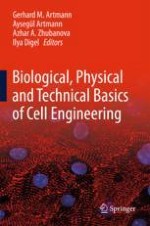2018 | OriginalPaper | Chapter
Novel MRI Contrast from Magnetotactic Bacteria to Evaluate In Vivo Stem Cell Engraftment
Authors : Ji-Hye Jung, Yuko Tada, Phillip C. Yang
Published in: Biological, Physical and Technical Basics of Cell Engineering
Publisher: Springer Singapore
Activate our intelligent search to find suitable subject content or patents.
Select sections of text to find matching patents with Artificial Intelligence. powered by
Select sections of text to find additional relevant content using AI-assisted search. powered by
